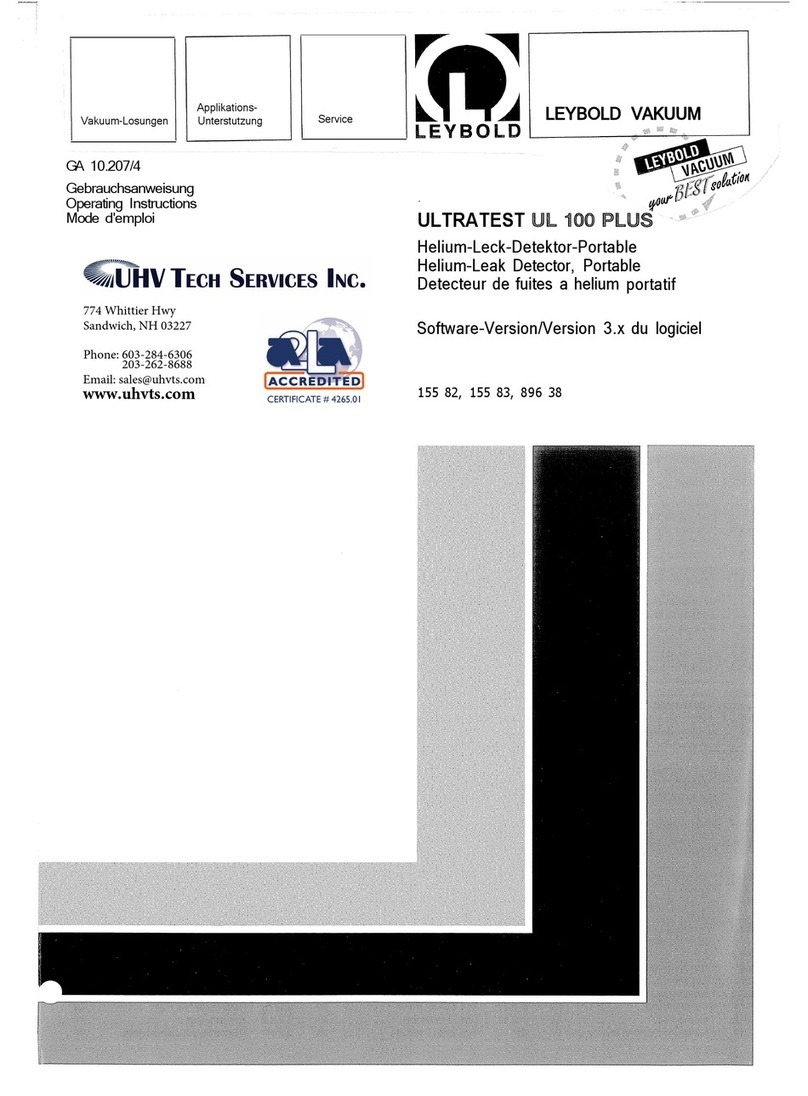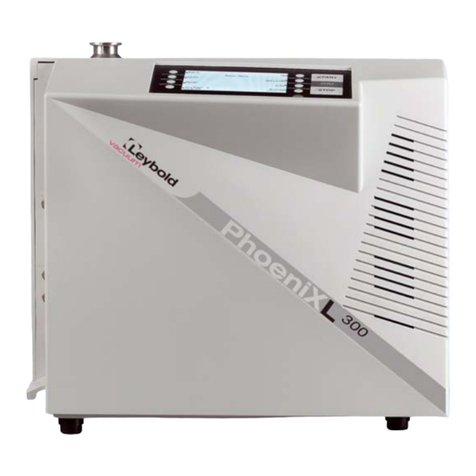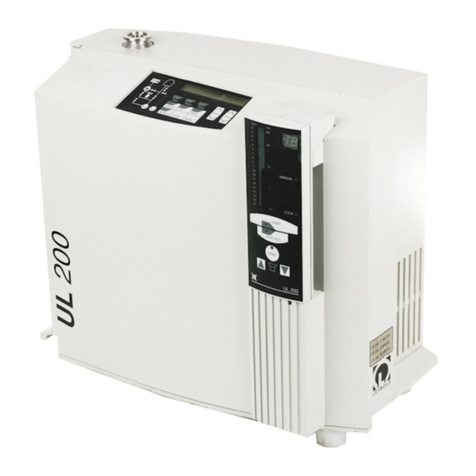
Content
GA10218_002_C0 - 10/2016 - © Leybold GmbH 3
3.2.7 Speaker Volume ........................................................................ 36
3.2.8 Status Line in the Display ........................................................... 36
3.2.9 Measurement Mode with Bargraph ............................................ 37
3.2.10 Measurement Mode with Trend Information ............................... 37
3.3 First Operation Check ................................................................ 37
3.4 Control Panel ............................................................................. 39
3.5 Interfaces ................................................................................... 44
3.6 Operation .................................................................................. 51
3.6.1 Main Menu ................................................................................ 52
3.6.2 View .......................................................................................... 54
3.6.3 Scale Linear/Logarithmic ........................................................... 54
3.6.4 Display-Range Auto/Manual ...................................................... 55
3.6.5 Time Axis ................................................................................... 56
3.6.6 Contrast .................................................................................... 56
3.6.7 Background in standby .............................................................. 57
3.6.8 Lower Display Limit .................................................................... 57
3.7 Mode ......................................................................................... 58
3.8 Trigger & Alarms ........................................................................ 59
3.8.1 Trigger Level 1 ........................................................................... 59
3.8.2 Trigger Level 2 ........................................................................... 60
3.8.3 Trigger Level 3 ........................................................................... 60
3.8.4 Units .......................................................................................... 60
3.8.5 Volume ...................................................................................... 61
3.8.6 Alarm Delay ............................................................................... 61
3.8.7 Audio Alarm Type ...................................................................... 62
3.9 Calibration ................................................................................. 63
3.10 Settings ..................................................................................... 64
3.10.1 Vacuum Settings ....................................................................... 65
3.10.2 Filter & Background ................................................................... 73
3.10.3 Mass ......................................................................................... 75
3.10.4 Miscellaneous (Language, Calibration request, Service interval...) 75
3.10.5 Parameter Save/Load ................................................................ 78
3.10.6 Monitoring Functions ................................................................. 78
3.11 Information ................................................................................ 82
3.11.1 Service ...................................................................................... 83






























